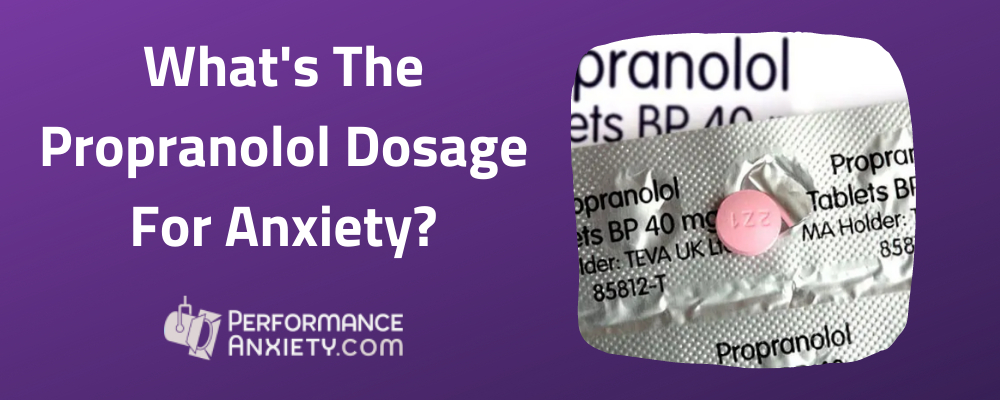Propranolol, a non-selective beta-adrenergic antagonist, has garnered attention for its off-label use in managing anxiety. Originally devised to treat hypertension and various cardiovascular ailments, its efficacy in alleviating the symptoms of anxiety—particularly performance anxiety—has made it a prevalent choice among medical practitioners. Understanding the maximum dosage of propranolol for anxiety is essential for both healthcare providers and patients alike, as it directly impacts the pharmacological outcomes and minimizes adverse effects.
Understanding Propranolol
Propranolol functions by blocking beta receptors in the heart, which leads to a decrease in heart rate and blood pressure, inducing a calming effect. This mechanism is particularly advantageous for individuals suffering from situational anxiety, such as public speaking or performance-related stress. However, it is vital to recognize that propranolol does not address the psychological components of anxiety but rather mitigates the physiological symptoms associated with it, such as palpitations and tremors.
Determining Dosage: General Recommendations
The recommended starting dosage for propranolol in anxiety management typically varies from patient to patient. Physicians often prescribe doses in the range of 10 mg to 40 mg taken two to three times a day. For situations demanding acute intervention—such as a high-stakes presentation—patients might take a higher dose closer to the event. Generally, the maximum recommended dosage for anxiety can reach up to 320 mg per day, though such high levels should only be considered under strict medical guidance.
Individual Considerations
Individual factors play a significant role in determining the appropriate dosage of propranolol for anxiety. Age, weight, overall health, and the presence of other medical conditions can influence the drug’s effectiveness and the likelihood of side effects. For instance, older adults may require a lower dose due to age-related physiological changes that affect drug metabolism. Similarly, those with underlying cardiovascular issues might necessitate more cautious titration to avoid excessively lowering heart rates.
Utilization in Performance Anxiety
One of the most common scenarios in which propranolol is employed is performance anxiety. For individuals facing situations where anxiety can inhibit performance, such as actors, musicians, or public speakers, propranolol provides a pragmatic solution. Typically, a dose between 20 mg and 40 mg is effective when taken approximately one hour before the performance. It allows individuals to maintain their composure, thereby enhancing their overall performance and enjoyment of the activity.
Gradual Titration
When prescribing propranolol, healthcare providers often practice gradual titration—starting at a low dose and gradually increasing it based on efficacy and tolerance. This approach minimizes side effects and aids in assessing how the individual responds to the medication. Patients should closely monitor their symptoms and communicate with their healthcare provider regarding any adverse reactions or lack of improvement.
Potential Side Effects
While propranolol is generally well-tolerated, it is not without potential side effects. Common side effects may include fatigue, dizziness, and gastrointestinal disturbances. In rarer instances, individuals may experience bradycardia (a slower than normal heart rate), hypotension (low blood pressure), or even depression. It is crucial to weigh the benefits against the risks, particularly in instances where higher doses are necessitated. Patients should be vigilant in reporting any concerning symptoms to their healthcare provider.
Drug Interactions and Contraindications
Safety considerations extend beyond individual tolerance. Propranolol may interact with various medications, including other antihypertensives, antidepressants, and certain anticoagulants. Engaging in a thorough medication review with a healthcare provider is essential to mitigate any risks associated with drug interactions. Additionally, individuals with certain medical histories, such as asthma or severe respiratory conditions, may not be appropriate candidates for propranolol due to its potential to induce bronchospasm.
Conclusion: Personalized Treatment Plans
The utility of propranolol for anxiety lies in its ability to afford individuals quick respite from debilitating symptoms. However, determining the maximum dosage is highly individualized. Healthcare providers must consider numerous factors when prescribing propranolol, ensuring not only therapeutic efficacy but also patient safety. Through gradual titration, close monitoring, and a willingness to adjust based on individual response, propranolol can serve as a valuable tool in the therapeutic arsenal against anxiety, paving the way for greater ease in navigating life’s demands.
Understanding the maximum dose of propranolol for anxiety is not merely about numbers; it is about enhancing the quality of life for individuals grappling with anxiety. Establishing a collaborative approach in treatment facilitates an environment where patients can thrive, equipped with the tools needed to face their anxiety head-on.
